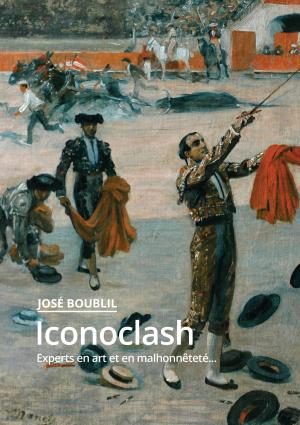Elementary Instruction in The Art of Illuminating and Missal Painting on Vellum
A Guide to Modern Illuminators
Nonfiction, Home & Garden, Crafts & Hobbies, Art Technique, Art & Architecture, General Art| Author: | J. WERTHEIMER AND CO. | ISBN: | 1230000291243 |
| Publisher: | D. Laurent de Lara | Publication: | January 13, 2015 |
| Imprint: | Language: | English |
| Author: | J. WERTHEIMER AND CO. |
| ISBN: | 1230000291243 |
| Publisher: | D. Laurent de Lara |
| Publication: | January 13, 2015 |
| Imprint: | |
| Language: | English |
Example in this ebook
beautiful "Art of Illuminating," which sprang up with the early dawn of Christianity, and attained its highest perfection in the fourteenth and fifteenth centuries, owes its total extinction to that powerful instrument of modern civilisation, the Printing Press. Whether it be the phlegmatic Dutch Coster, or the German Necromancer, Guttenberg, who was the first inventor of "moveable type," I know not; but it is quite certain that the "printing process" struck a fatal and decisive blow to "illuminated painting," the relics of which at present are carefully hoarded up in our Museums and Public Libraries, and are at once the living and imperishable oracles of the bygone ages of romance and chivalry, and form the glorious monuments of the known and unknown artists who created them! It is equally true, as well as curious, that to another mode of printing (chromo-lithography) the present century is indebted for the partial revival of this beautiful art, since the many publications from the lithographic press have engendered a corresponding taste with the public for its cultivation, which is daily increasing. That taste is now so manifest, and so general amongst the higher and middle classes, that it can no longer be considered as a mere "fashionable" pursuit, subject to the capricious ebb and flow of the tide of fashion, and again to be doomed to pass into oblivion. I believe a healthier motive is apparent in its cultivators; and the desire of re-instating it to the rank it once held amongst its sister arts is not unmixed with the holier emotions which a genuine religious feeling, arising from the daily contemplation of the divine truths of Holy Writ (as exhibited in the study of our finest missals), is capable of producing. In this respect, it presents itself to the devout mind of the novice as a labour of love, for the glorious poetry of the Bible offers such a singularly fertile source, to which the imagination and pencil may look for artistic inspiration.
The seductiveness of the art, too, on which the meanest capacity can employ itself, is another incentive, which will cause many to venture on so pleasing an occupation. The interesting question then arises: What probable results are likely to follow from this general revival of an obsolete art? My answer is, "That modern civilisation will adapt it to our modern wants, and will gradually lay the foundation of forming a new school, identical with the nineteenth century." To attain this end, conscientious artists only can pave the road; they have it in their power to direct and guide the masses, and the public is sure to go with them.
The Illuminating Art Union of London, in its annual expositions, invites artists to exhibit their productions, by which others less gifted may be incited to follow their example. True Genius, however exalted, does not feel itself above instructing others, as long as through the medium of its productions the very best interests of the art are likely to be promoted. Gradually, these productions will develop new ideas, new resources, and features of originality, in addition to the improvements which modern civilisation and modern appliances necessarily suggest. Already three prizes have been awarded for original designs of the "Beatitudes"; and, as a first essay of a young Society, they are eminently creditable. The highest in the land, and, perhaps, the humblest also, are its members and supporters; and however the effort to increase its strength and its popularity might have been thwarted, by the lukewarmness of those professedly the most interested in the art, we owe it a debt of profound gratitude, for the real good it has already achieved, and cheerfully join our wishes for its welfare and success in what it still hopes to accomplish.
To be continue in this ebook
Example in this ebook
beautiful "Art of Illuminating," which sprang up with the early dawn of Christianity, and attained its highest perfection in the fourteenth and fifteenth centuries, owes its total extinction to that powerful instrument of modern civilisation, the Printing Press. Whether it be the phlegmatic Dutch Coster, or the German Necromancer, Guttenberg, who was the first inventor of "moveable type," I know not; but it is quite certain that the "printing process" struck a fatal and decisive blow to "illuminated painting," the relics of which at present are carefully hoarded up in our Museums and Public Libraries, and are at once the living and imperishable oracles of the bygone ages of romance and chivalry, and form the glorious monuments of the known and unknown artists who created them! It is equally true, as well as curious, that to another mode of printing (chromo-lithography) the present century is indebted for the partial revival of this beautiful art, since the many publications from the lithographic press have engendered a corresponding taste with the public for its cultivation, which is daily increasing. That taste is now so manifest, and so general amongst the higher and middle classes, that it can no longer be considered as a mere "fashionable" pursuit, subject to the capricious ebb and flow of the tide of fashion, and again to be doomed to pass into oblivion. I believe a healthier motive is apparent in its cultivators; and the desire of re-instating it to the rank it once held amongst its sister arts is not unmixed with the holier emotions which a genuine religious feeling, arising from the daily contemplation of the divine truths of Holy Writ (as exhibited in the study of our finest missals), is capable of producing. In this respect, it presents itself to the devout mind of the novice as a labour of love, for the glorious poetry of the Bible offers such a singularly fertile source, to which the imagination and pencil may look for artistic inspiration.
The seductiveness of the art, too, on which the meanest capacity can employ itself, is another incentive, which will cause many to venture on so pleasing an occupation. The interesting question then arises: What probable results are likely to follow from this general revival of an obsolete art? My answer is, "That modern civilisation will adapt it to our modern wants, and will gradually lay the foundation of forming a new school, identical with the nineteenth century." To attain this end, conscientious artists only can pave the road; they have it in their power to direct and guide the masses, and the public is sure to go with them.
The Illuminating Art Union of London, in its annual expositions, invites artists to exhibit their productions, by which others less gifted may be incited to follow their example. True Genius, however exalted, does not feel itself above instructing others, as long as through the medium of its productions the very best interests of the art are likely to be promoted. Gradually, these productions will develop new ideas, new resources, and features of originality, in addition to the improvements which modern civilisation and modern appliances necessarily suggest. Already three prizes have been awarded for original designs of the "Beatitudes"; and, as a first essay of a young Society, they are eminently creditable. The highest in the land, and, perhaps, the humblest also, are its members and supporters; and however the effort to increase its strength and its popularity might have been thwarted, by the lukewarmness of those professedly the most interested in the art, we owe it a debt of profound gratitude, for the real good it has already achieved, and cheerfully join our wishes for its welfare and success in what it still hopes to accomplish.
To be continue in this ebook















